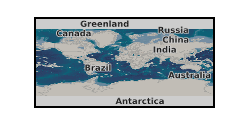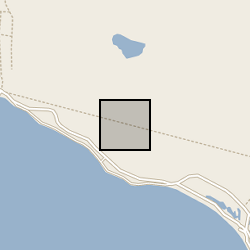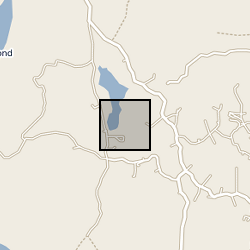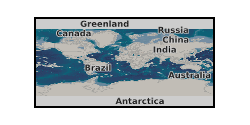Palaeoclimatology
Type of resources
Topics
Keywords
Contact for the resource
Provided by
Years
Formats
Update frequencies
-

Published paper associated with NERC grant NE/F011091/1. Price, G.D., Twitchett, R.J., Wheeley, J.R., Buono, G. 2013. Isotopic evidence for long term warmth in the Mesozoic. Scientific Reports, 3, 1438. doi: 10.1038/srep01438
-

The dataset contains oxygen and carbon isotope measurements from multiple-shell samples of the ostracod Heterocypris punctata, from Core FP2 taken from Freshwater Pond, Barbuda. A chronology for the core is provided by radiocarbon dates. The data, which are further described in Burn et al. (2016) The Holocene, 26(8), 1237-47, provide a proxy for changing rainfall patterns for the period 2000-1555 CE.
-

Oxygen and carbon isotope measurements from multiple-shell samples of the ostracod Cypretta brevisapta, and loss-on-ignition determinations, from Core WAGP taken from Wallywash Great Pond, Jamaica. A chronology for the core is provided by radiocarbon dates and short-lived radio-isotopes. The data provide a proxy for changing hydroclimate for the period 2000 – 200 CE.
-

This dataset presents tephra layers, Ar-dates, age-model & stable isotope data from the >250 kyr-long Lake Chala sediment record, Kenya/Tanzania. The file is split into six tables: (1) metadata on the 30 tephra layers (29 visible tephra layers, one cryptotephra) studied to date, including sample and core codes, summary characteristics and ages; (2) summary of Ar-dating results on ten of the Lake Chala tephra layers; (3) the DCH_TephraAge Bayesian age model, which combines tephra, 210Pb and 14C age-estimates for the length of the core; (4) Raw single-grain WDS-EPMA results for all tephra layers studied in the DeepCHALLA sediment record; and (5) secondary standard data; (6) unpublished Diatom ?18O (‰ VSMOW), Bulk organic ?13C (‰), %C and Diatom d13C (‰) measurements for the full length of the core (given on a composite depth scale). These chronological data (Tables 1-5) are central to the reconstruction of palaeoclimate from a multi-proxy analyses of the Lake Chala sediment sequence and are included in publications by Baxter et al. (2023) and Martin-Jones et al. (2020, in review), for which references are given in the appropriate files. Stable isotope data (produced by Barker and Leng) remains unpublished at the time of upload. The data was generated by Catherine Martin-Jones, Christine Lane, Maarten Blaauw, Darren Mark, Melanie Leng and Phil Barker between 2017-2022. Much of the tephra data is published and references are provided.
-

Global warming during the Palaeocene-Eocene Thermal Maximum (PETM, ~56 Ma) is commonly interpreted as being driven by massive destabilization of carbon from surficial sedimentary reservoirs. If correct, this has important implications for the amplification of future fossil fuel emissions via carbon-climate feedbacks. In our study we provided new paired records of boron and carbon isotope changes in the ocean that questions this long-held interpretation. Our data are implemented in an Earth system model to reconstruct the unfolding carbon cycle dynamics across the event. Strong evidence for a larger (>10,000 PgC) and on average isotopically heavier (> -17‰) carbon source leads us to identify volcanism associated with the North Atlantic Igneous Province as the main driver of the PETM. We also find that although organic carbon feedbacks with climate played a more minor role in driving the event than previously thought, organic matter burial was important in ultimately sequestering this carbon and driving the recovery of the system. Data presented in this data set comprise geochemical elemental, as well as boron, carbon and oxygen isotopic data from surface dwelling foraminifera Morozovella Subbotina. Alongside the boron isotopic data we also provide reconstructed surface water pH with corresponding uncertainties for our preferred pH reconstruction.
 BGS Data Catalogue
BGS Data Catalogue